The parts of the St. Peter an der Sperr building complex — church, monastery, and municipal museum — are brought together to create a new unity. The result is a monolithic cube, which draws from the eaves height of the surrounding buildings and thus blends in, while still making a self-confident appearance on the cityscape. The new façade has a strong pixelated perforation that creates a diverse appearance and regulates insights, views, and lines of sight. The ground floor and first upper story façade is receded around the new main entrance area, creating a sheltered front area and marking the entrance. On the top floor, the façade surrounds an outdoor area, giving it a high-quality spatial closure and making the building seem to dissolve towards the sky at the prominent corner towards the Bürgermeistergarten. The heritage monastery and church, both museum extensions, are revitalized using minimally invasive measures. The new foyer, set along the exterior of the church nave, holds the box office area and a small shop with a cloakroom. The design of this building borrows from the new façade of the City Museum. The spatial concept fulfills the demands of a modern museum and makes linear exhibition tours and a multifunctional use of the rooms possible.
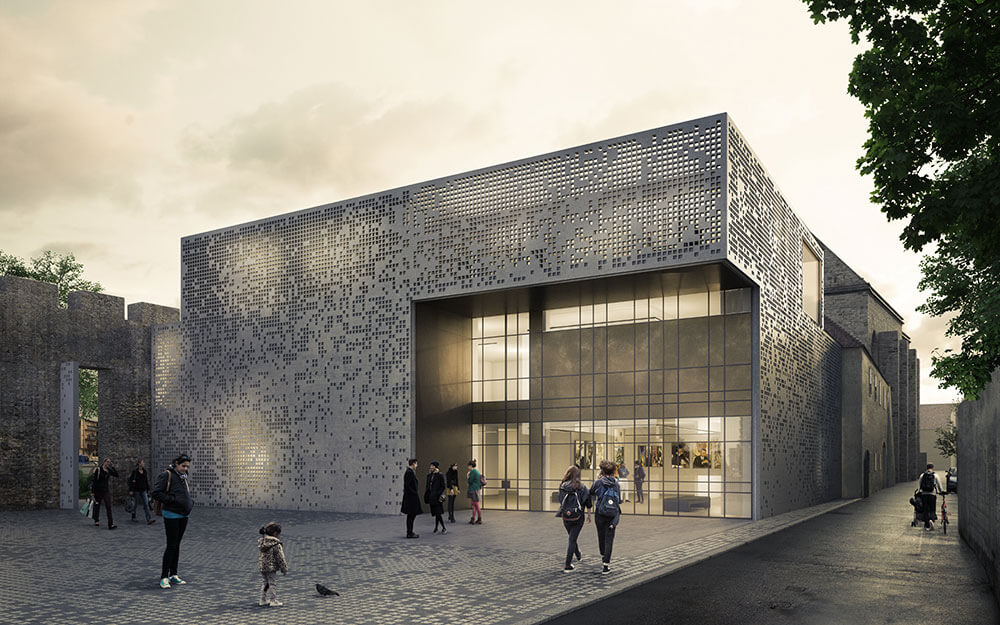
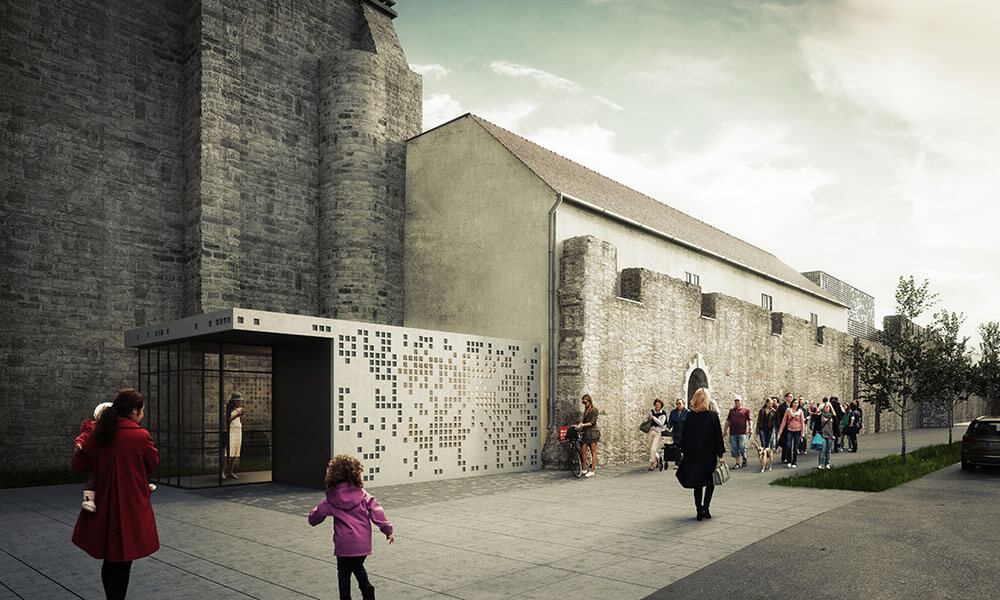
Location: St. Peter and der Sperr (Lower Austria)
Use Area: 1900 m²
Team: Lukas Göbl, Andrés España, Oliver Ulrich
in cooperation with architect Franz Gschwantner
Touch
Harvest or pick the plants and products of the pavilion
Process
Process harvested or picked products
Taste
Eat, drink, and enjoy the products made
Discover
Watch and observe, be inquisitive, examine, question, and discuss
Learn
Playfully learn about scientific topics on nutrition and energy
The Austria Pavilion will be inserted into the available volume of 83 x 15 x 12 meters. The building unites country and city, nature and technology, landscape and building — it sets the stage for Austria’s presentation at the EXPO 2015, a stage defined by Austria’s specialties, beauty, and innovation in alternative ways of living and eating. The Austrian pavilion will be constructed largely of native spruce timber. Wood grows quickly and is thus a viably sustainable building material that also has a long history in Austrian building traditions. Parts of the pavilion are used for various green spaces. Austrian companies have already developed innovative and tested stabilization and irrigation systems for green façades. The suspended façade is not only a clear eye-catcher, it also generates energy. So-called Solar Ivy (in red and white, the national colors), hangs from a steel grid and produces electricity. The wind tulip, an Upper Austrian product, noiselessly produces clean electricity.
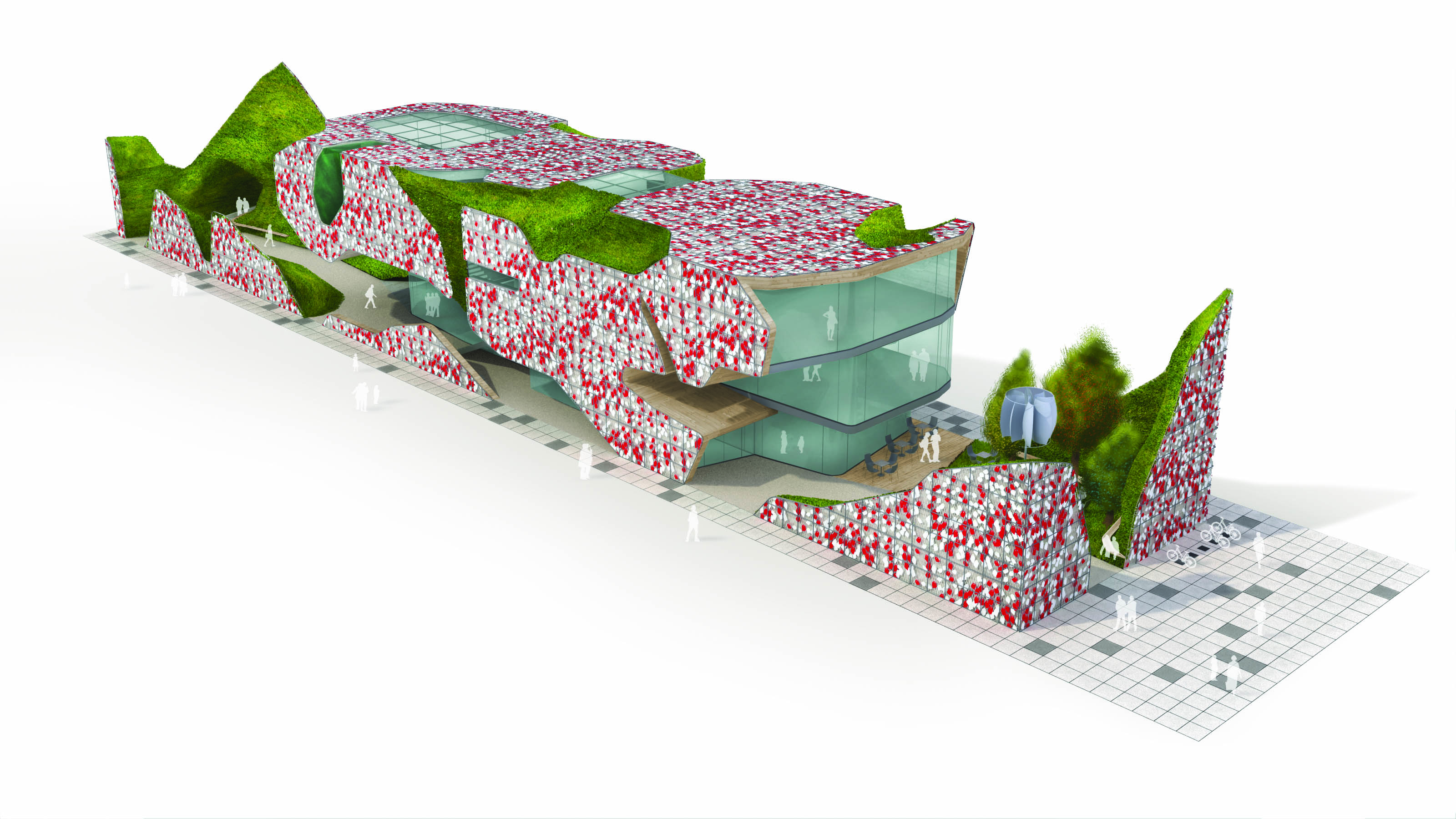
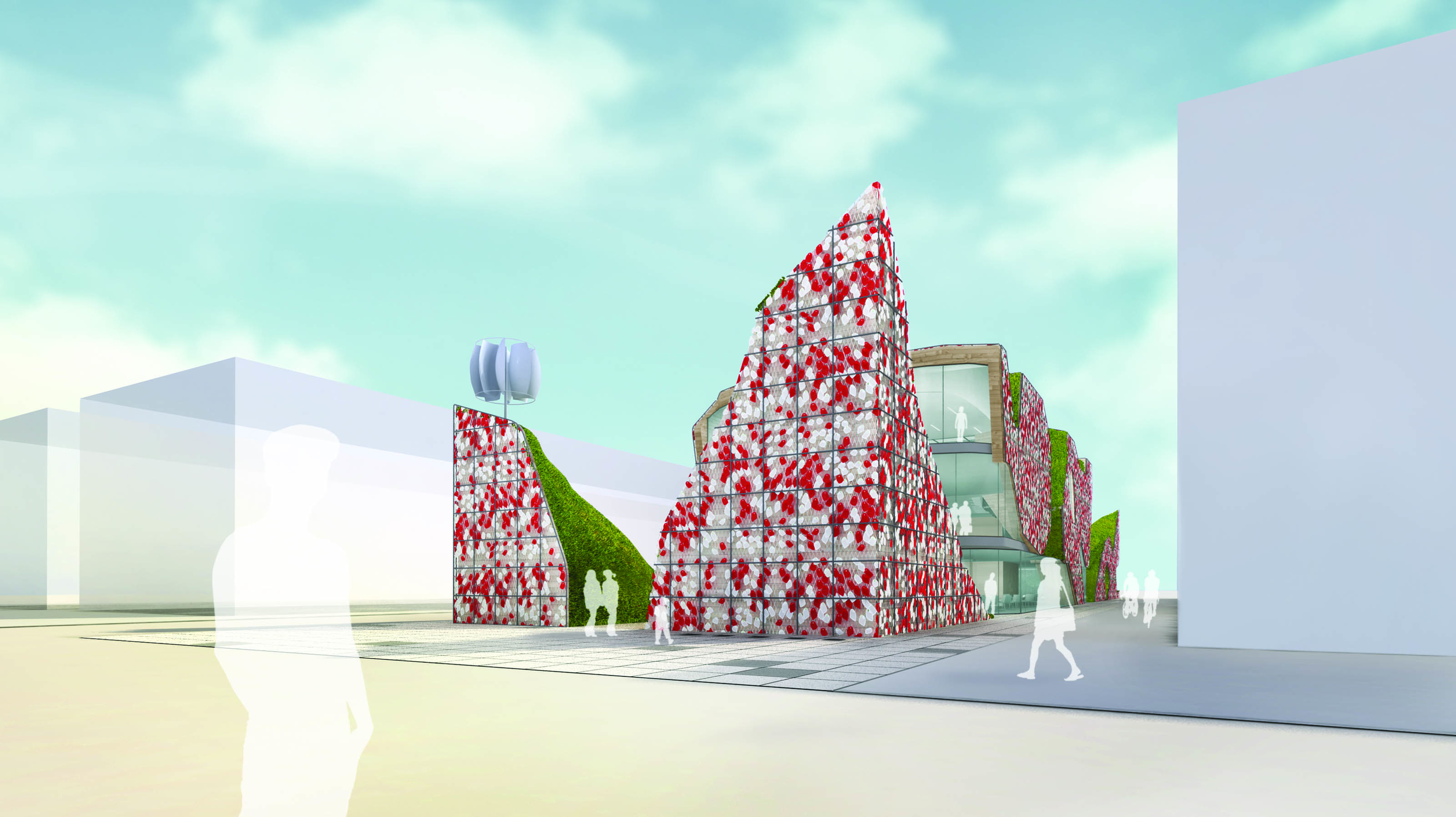
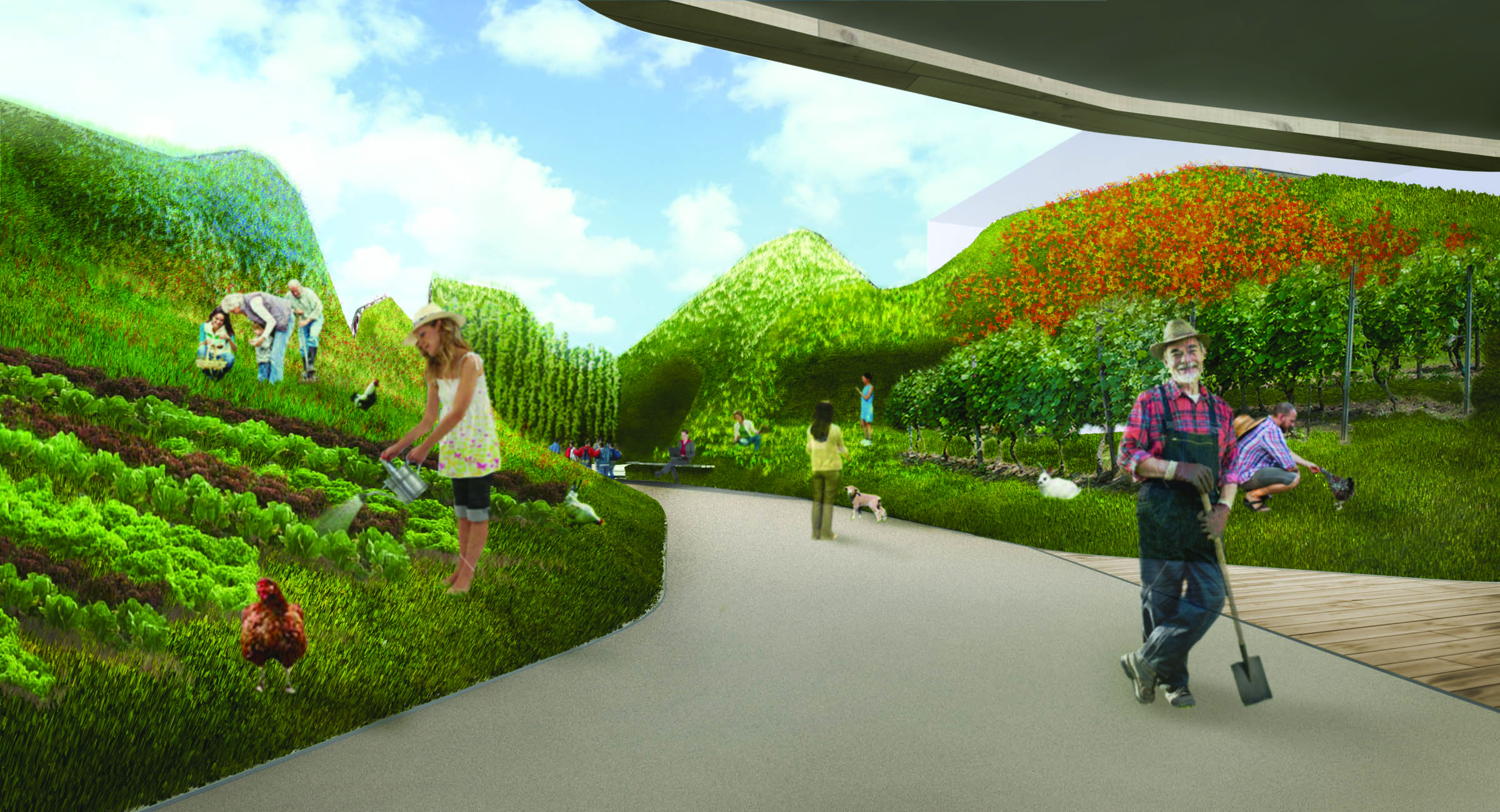
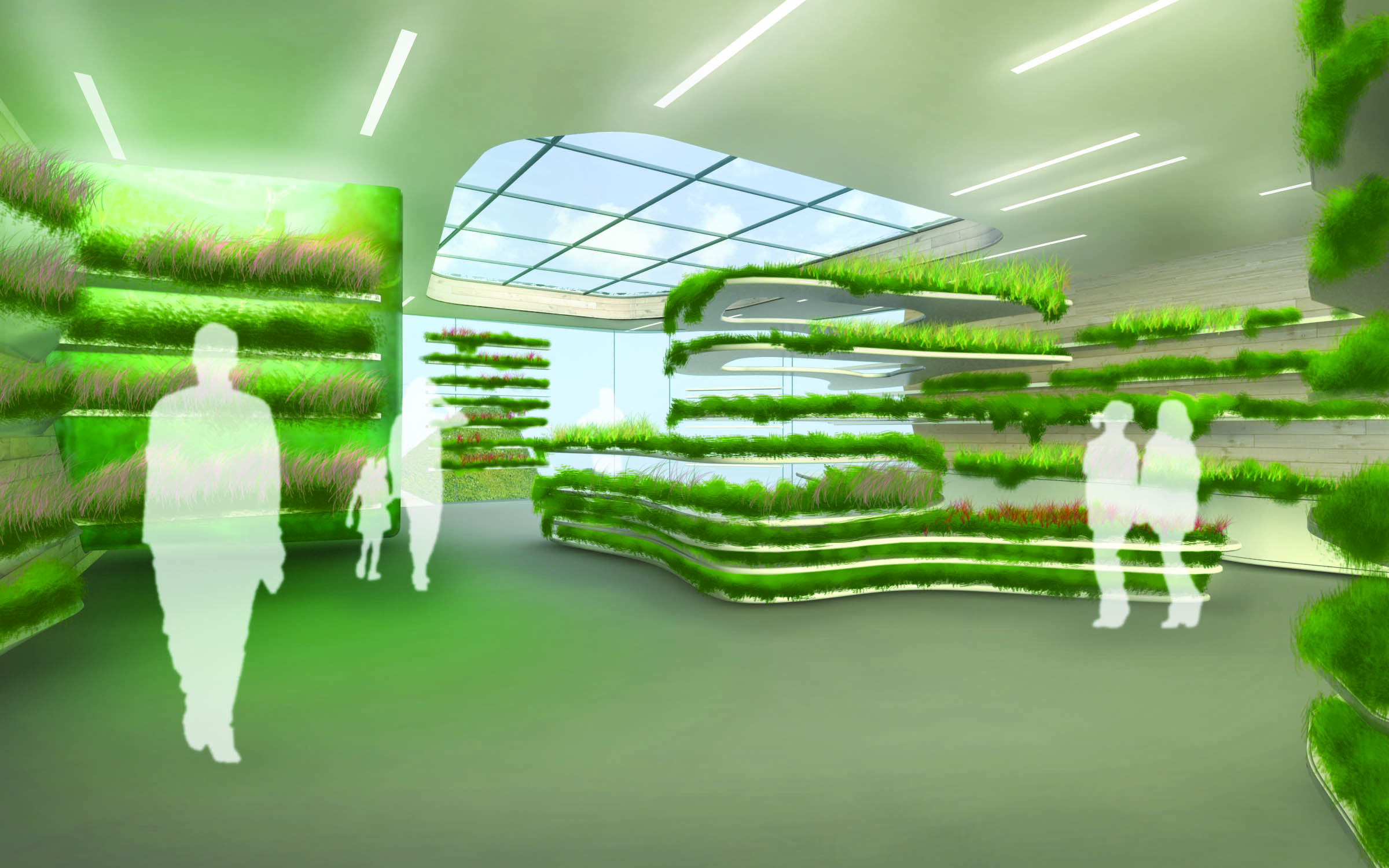
Location: Milan (Italy)
Year: Competition 2013
Use Area: ca. 1000 m²
Team: Lukas Göbl, Oliver Ulrich, Alexander Enz, Roxana Clep, Boris Steiner





